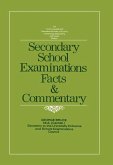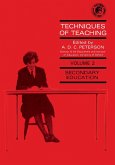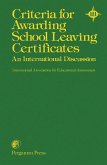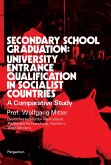This book has 10 chapters; the first of which provides an overview of the comprehensive movement in education and the concept of the common school, as well as the effects of reorganization on academic standards. The discussion then turns to the controversy concerning streaming and non-streaming in the comprehensive school; how to educate at the secondary level children who are less able and/or are culturally deprived; and the importance of vocational guidance and counseling. The chapters that follow explore issues associated with the curriculum and general school policy in the light of the school's aims and its function in society; the problem of size of school; and the nature and scope of secondary school curriculum. This book concludes by assessing the relative advantages and disadvantages of different types of reorganized school.
Educators and policymakers with an interest in comprehensive education will find this book extremely helpful.
Dieser Download kann aus rechtlichen Gründen nur mit Rechnungsadresse in A, B, BG, CY, CZ, D, DK, EW, E, FIN, F, GR, HR, H, IRL, I, LT, L, LR, M, NL, PL, P, R, S, SLO, SK ausgeliefert werden.









